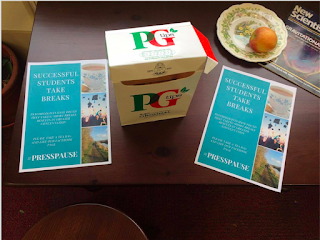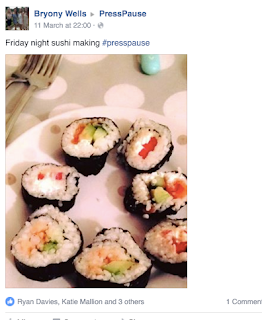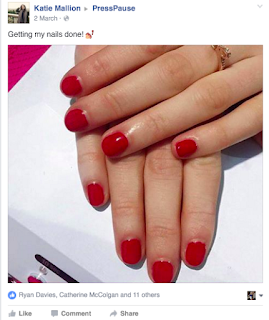HOW TO MAKE A PROSOCIAL CHANGEObjective:Influence individuals to donate to a charity that is not well known. Why:Individuals give freely to charities that are known but less willing to give to less famous charities. For example, cancer research raise over £431million and Oxfam £385.5million per annum. Other less known charities, raise considerably less. We believe one reason for this is effectiveness of persuasion and influence. Chosen Charity:Children’s University Foundation is and International critically acclaimed charity. They raise less that £1million per annum.The volunteers work with underprivileged children (7-14years) to bridge the gap in education between students of different socioeconomic status. They promote social mobility by providing access to high quality out-of-school hours learning activities. The ambition is to aspire, boost achievement and foster a love of learning. The closest branch of the charity is in Warwickshire and a promotional video for the charity was also filmed by students at the University of Warwick. The work done by Warwick students, was inspiring for the students affected by the Children’s University Trust.With the Government cutting funding to community activities, the charity’s work is becoming even more important. http://www.childrensuniversity.co.uk/home/about-us/Proposed Action Plan:· Book fundraising buckets at SU Reception for 6 weeks. · Form a partnership with the SU and Warwick Volunteers to support the project· Email Warwick Volunteers and request to play promotional video at the Piazza· Create Petition form · Decide specific location to fundraise · GO OUT AND FUNDRAISE!Email sent to Warwick SU and Warwick Volunteers:Measures · Amount of money raised using the different techniques · Number of donations per day Techniques and Results:DOOR-IN-THE-FACE: Follow a large refused request with a small one. ResearchSeveral confederates made requests through door-to-door sales. In the DITF condition, they made a large/moderate request for homeowners to volunteer and fundraise for an unknown charity. When this request was rejected, confederates asked the subjects to give any amount for the charity (small request). Participants in the control condition received only the small request. 60%of the participants in the DITF condition complied compared to 31% in the control condition (Tusing and Dillard, 2000). Our action· Ask university students to donate 2 hours of their time now to raise money for the charity (large)· Ask the students to donate £1 (small)FOOT-IN-THE-DOOR: Make a small request to pay the way for compliance to a larger request.ResearchIn 1983, Schwarzwald, Bizman and Raz conducted an experiment asking people to sign a petition for the establishment of a social club for the handicapped. This was followed by a larger request to donate either an amount of money of their discretion or a predetermined amount (£40,50, or 60) requested by the canvasser. Results revealed that those who had a signed a petition were more likely to donate. Our action: · Ask university students to sign petitions for the university to allow charity videos to be played on the Piazza screen (small request)· Ask students to simultaneously donate to the charity (large)Petition
MERE-EXPOSURE: Repeatedly expose subjects to the desired stimulus. This will induce familiarity and likely behaviour change.Our action:· Play the charity promotional video on the piazza screen · Familiarise university students to the charity and it’s work· Increase likelihood of donation when askedResearchIn the experiment, there were four pairs experimenters, a talker and a listener. The talker had to talk to the listener infront of the subject. There were 3 conditions, in the first one, the experimenter had to conduct a pleasant conversation with the listener infront of the subject. In the second condition, the experimenter had to conduct an unpleasant conversation infront of the subject. In the controlled condition, no conversation took place. The talker had to then ask the subject for money (a quarter) by saying that he could not find his wallet. It was found that a small increase in familiarity with an unfamiliar supplicant (even if the conversation was unpleasant) increased positive action i.e. donation (Macaulay, 1975).Video:OVERALL RESULTS Foot-in-the-Door Door-in-the-Face Mere Exposure Just-Ask Number of Donations 73 64 117 50 Amount Collected 37 29 92 25 References:Macaulay, J. (1975). Familiarity, Attraction, and Charity. The Journal Of Social Psychology, 95(1), 27-37.Schwarzwald, J., Bizman, A., & Raz, M. (1983). The foot-in-the-door paradigm effects of second request size on donation probability and donor generosity. Personality and Social Psychology Bulletin, 9(3), 443-450.Tusing, K. J.& Dillard, J. P. (2000). “The psychological reality of the door-in-the-face: It’s helping, not bargaining”. Journal of Language and Social Psychology 19: 5–25.Maria Shahzad, Abheer Bawany and Devika Jain
#PressPause
With exams fast approaching, it is not uncommon for students to start to feel the pressure associated with performing well through pulling unrealistic all-nighters or being glued to their library desk 15 hours a day. When we conducted an initial survey to explore stress in students, only 14.3% reported taking regular breaks and, unsurprisingly, over 75% reported feeling very or extremely stressed as a result. As well as fatigue, a lack of breaks and remaining at the same desk for hours can cause physical symptoms in students such as, back, neck and shoulder pain. All of these symptoms could be easily reduced by taking short breaks every hour (Galinsky et al., 2000). This project aimed to encourage students at university to take regular breaks from studying with the #PressPause social media campaign. Before starting the campaign, we conducted a short qualtrix survey. This included two very short questions: 1) How often do you take study breaks? And 2) How stressed are you feeling with your workload currently? This was used to gage a general understanding of break-taking and stress in the student population. The first way we implemented the #PressPause campaign was through putting posters around campus:  The first persuasive technique used was source credibility, but including the phrase “Psychologists have found that taking short study breaks results in greater concentration.” Secondly, we used social proof by including photos of students graduating. The claim here is to make students who see these posters believe students become successful through taking breaks. Alongside our poster, we gave out free tea bags to use the technique of reciprocity. Evidence suggests that due to the norm of reciprocity, people are more likely to comply with our request to take breaks and post photos onto the Facebook page if they have first received something from us (Regan, 1971).
The first persuasive technique used was source credibility, but including the phrase “Psychologists have found that taking short study breaks results in greater concentration.” Secondly, we used social proof by including photos of students graduating. The claim here is to make students who see these posters believe students become successful through taking breaks. Alongside our poster, we gave out free tea bags to use the technique of reciprocity. Evidence suggests that due to the norm of reciprocity, people are more likely to comply with our request to take breaks and post photos onto the Facebook page if they have first received something from us (Regan, 1971). The second stage of our campaign was to set up a Facebook page, where students could post photos/ videos of themselves taking a break. This was also a platform where students could engage with each other and share taking a break ideas. So far the page has 52 likes and 22 students have posted on the page. Importantly, the Facebook page makes taking a break salient between students, by providing evidence from like-minded people on different ways to take a break. Again, social proof is used as seeing others posting photos of themselves taking a break makes it more likely that you will also go on to take breaks yourself (Cialdini et al., 1990).
The second stage of our campaign was to set up a Facebook page, where students could post photos/ videos of themselves taking a break. This was also a platform where students could engage with each other and share taking a break ideas. So far the page has 52 likes and 22 students have posted on the page. Importantly, the Facebook page makes taking a break salient between students, by providing evidence from like-minded people on different ways to take a break. Again, social proof is used as seeing others posting photos of themselves taking a break makes it more likely that you will also go on to take breaks yourself (Cialdini et al., 1990).

 Although it was not possible to re-survey those who had seen our campaign, the PressPause page has been viewed by over 100 Facebook users. We feel that our Facebook page having 52 likes and 22 posts from different students means that we were successful in encouraging more students at Warwick to take study breaks. References:Cialdini, R. B., Reno, R. R., & Kallgren, C. A. (1990). A focus theory of normative conduct: Recycling the concept of norms to reduce littering in public places. Journal of Personality and Social Psychology, 58, 1015-1026.Galinsky, T. L., Swanson, N. G., Sauter, S. L., Hurrell, J. J., & Schlleifer, L. M. (2000). A field study of supplementary rest breaks for data-entry operators. Ergonomics, 43, 622-638.Regan, D. T. (1971). Effects of a favour and liking on compliance. Journal of Experimental Social Psychology, 7, 627-639.Siobhan JonesSashvinder MandairMegan Reay
Although it was not possible to re-survey those who had seen our campaign, the PressPause page has been viewed by over 100 Facebook users. We feel that our Facebook page having 52 likes and 22 posts from different students means that we were successful in encouraging more students at Warwick to take study breaks. References:Cialdini, R. B., Reno, R. R., & Kallgren, C. A. (1990). A focus theory of normative conduct: Recycling the concept of norms to reduce littering in public places. Journal of Personality and Social Psychology, 58, 1015-1026.Galinsky, T. L., Swanson, N. G., Sauter, S. L., Hurrell, J. J., & Schlleifer, L. M. (2000). A field study of supplementary rest breaks for data-entry operators. Ergonomics, 43, 622-638.Regan, D. T. (1971). Effects of a favour and liking on compliance. Journal of Experimental Social Psychology, 7, 627-639.Siobhan JonesSashvinder MandairMegan Reay
Drink More. Do More.
The aim of our behaviour change project was to encourage students at the University of Warwick to drink more water. An infographic was produced detailing the benefits of drinking more water with advice on how much you should drink and student relevant benefits to drinking more water. At the bottom of the infographic students were asked to pledge to drink more water.These leaflets were handed out to students outside the library on the University of Warwick campus to more than 50 students. The researchers dispensed these leaflets during peak times (just before each hour when students were moving from lecture to lecture). When we approached the students we asked them a few questions about their water intake, and then asked them if they knew the benefits of drinking more water before providing them with the leaflet. Then participants were asked again to pledge to drink more water. By using a combination of credible sources and just asking the researchers encouraged people to drink more water. Whilst we didn’t measure if water consumption increased, it would be possible to do so by asking students to fill out a water diary for a week and comparing this to baseline levels. Overall responses to the leaflet were very positive with a large amount of students that were approached agreeing to drink more water. Emma PhillipsVictoria Pattinson
By using a combination of credible sources and just asking the researchers encouraged people to drink more water. Whilst we didn’t measure if water consumption increased, it would be possible to do so by asking students to fill out a water diary for a week and comparing this to baseline levels. Overall responses to the leaflet were very positive with a large amount of students that were approached agreeing to drink more water. Emma PhillipsVictoria Pattinson
- « Previous Page
- 1
- …
- 8
- 9
- 10
- 11
- 12
- …
- 88
- Next Page »